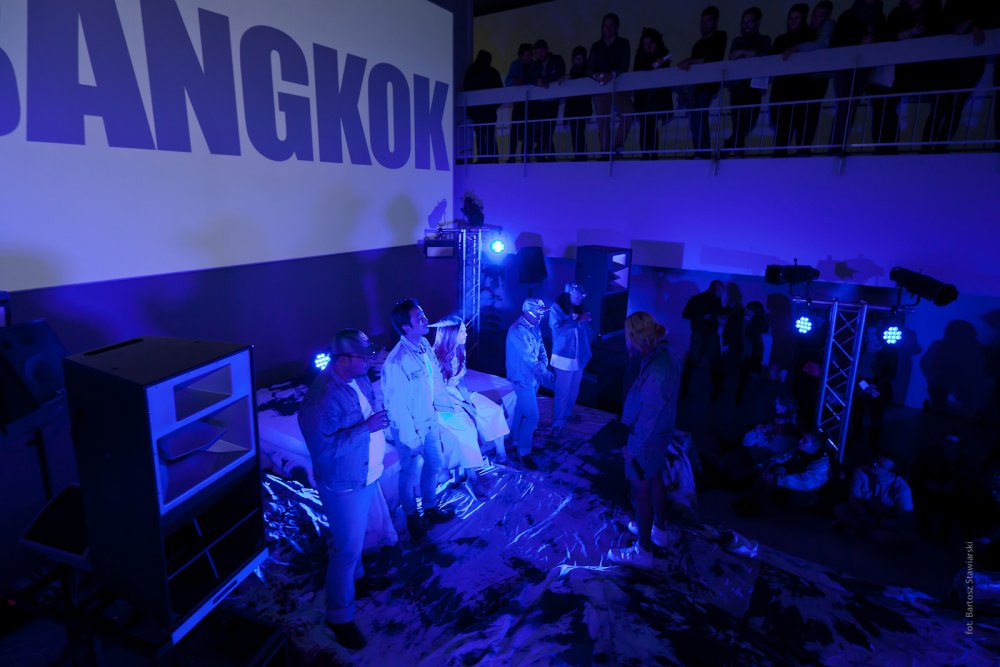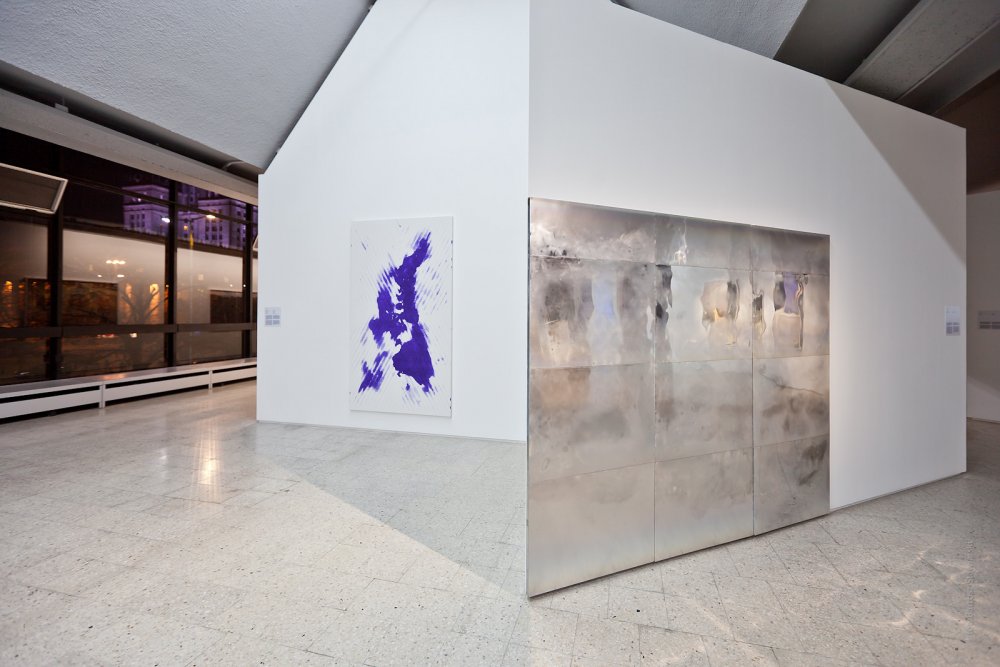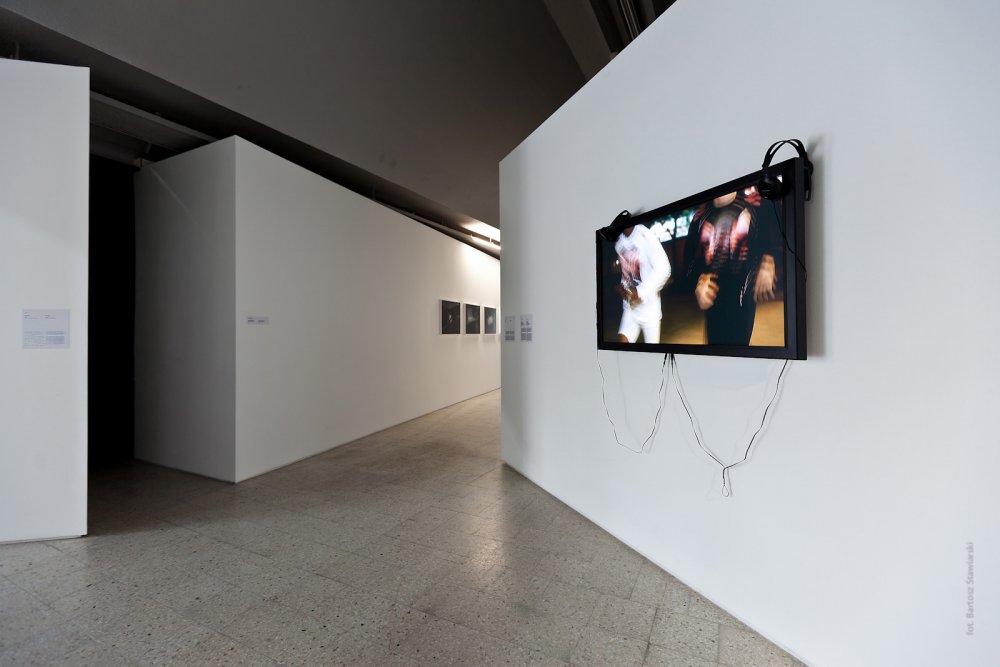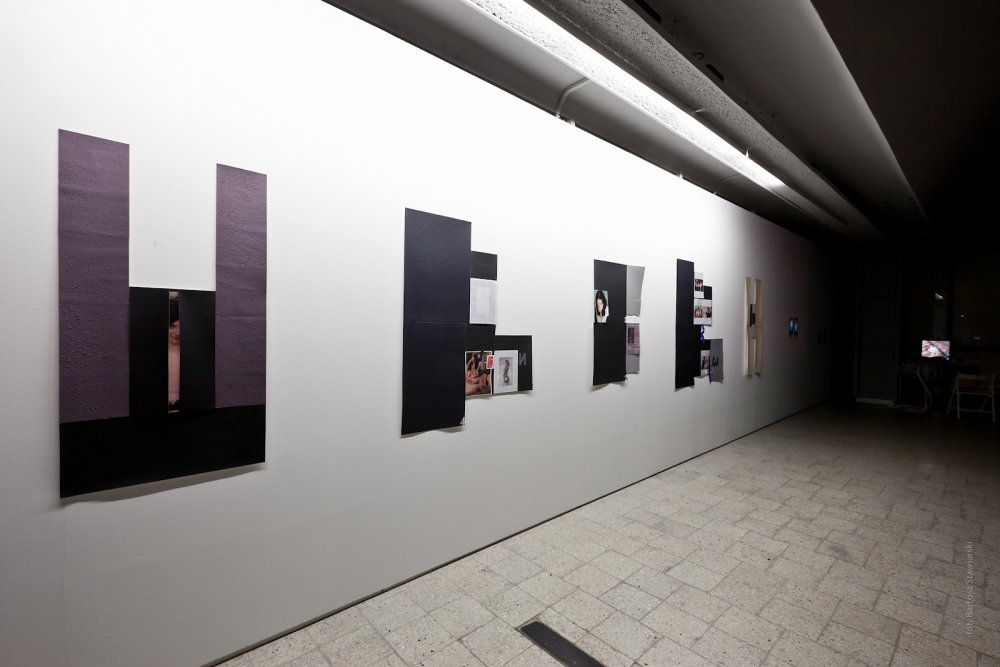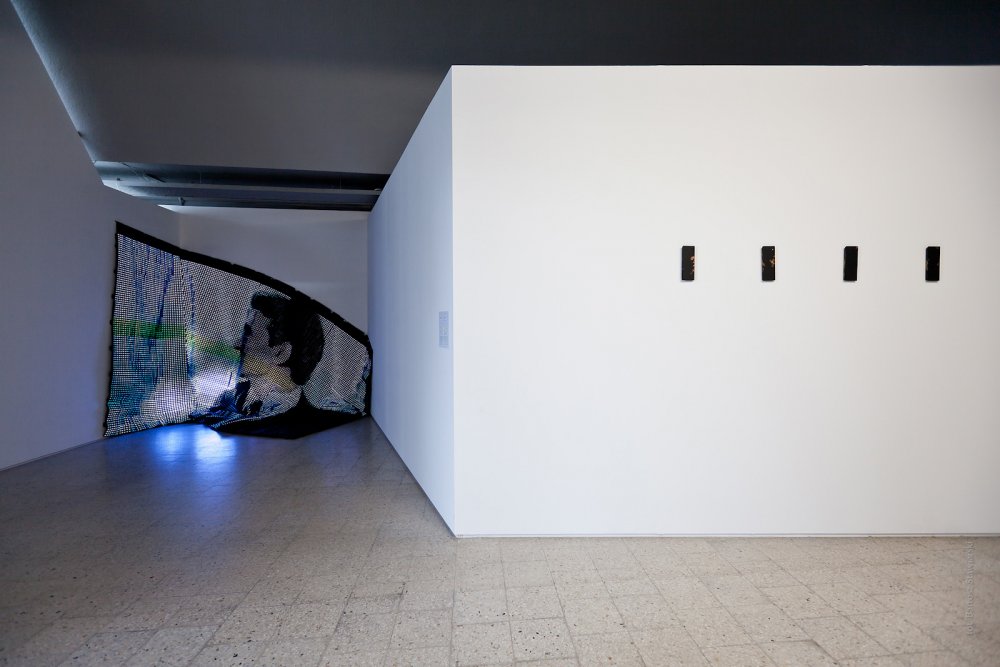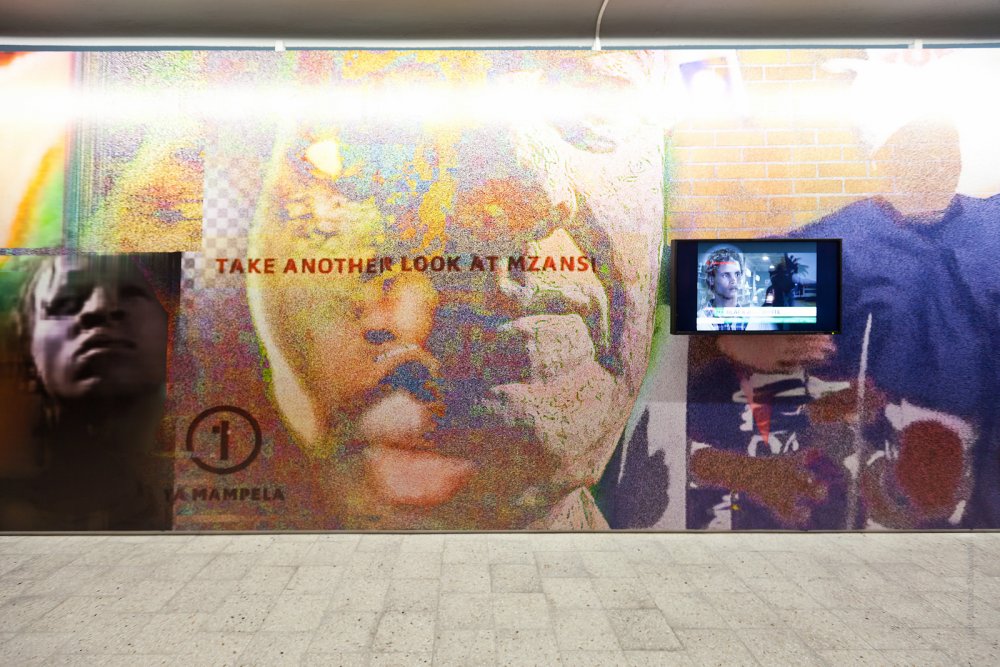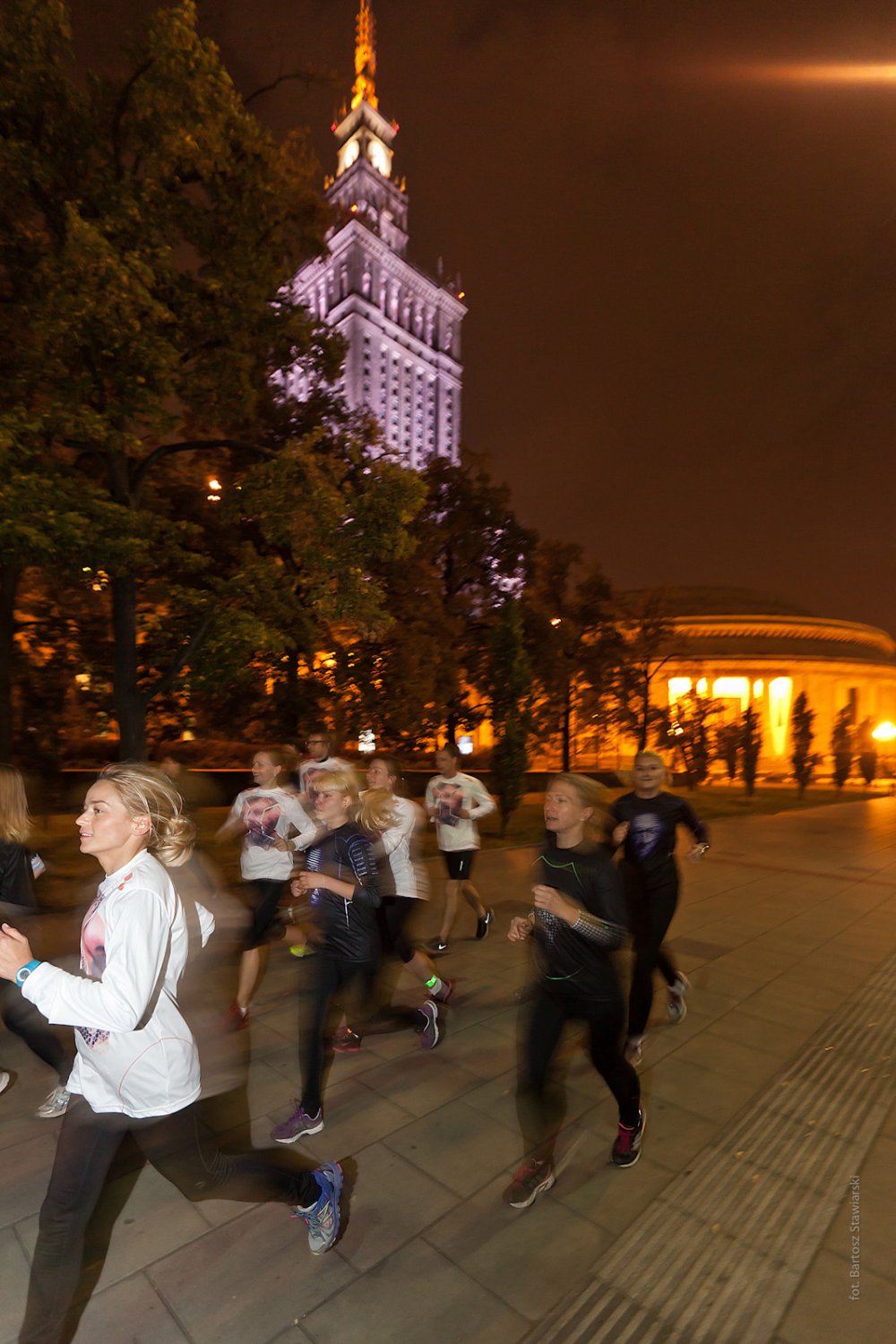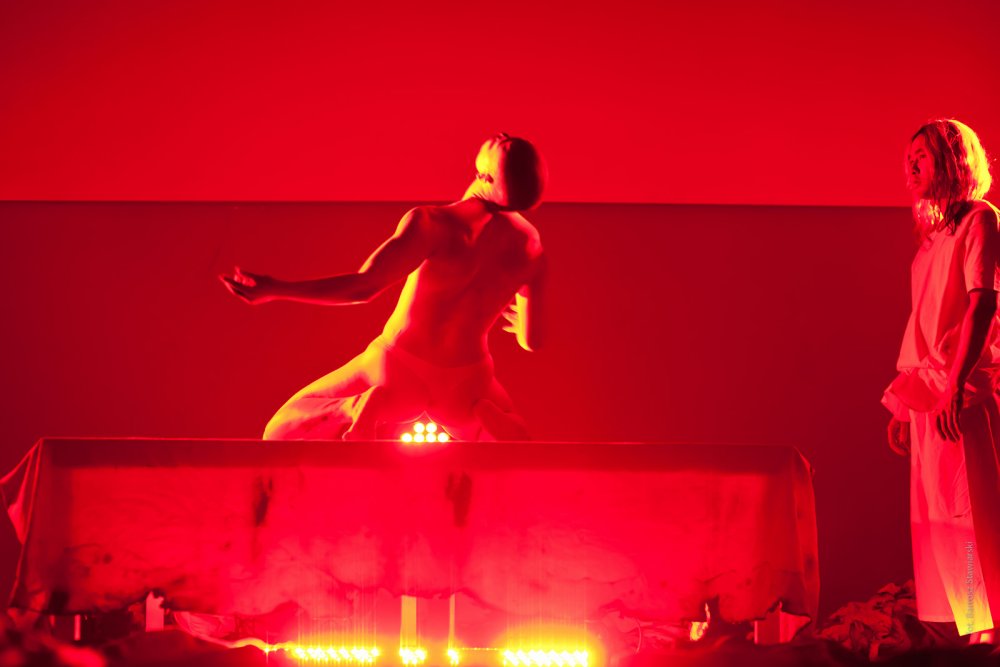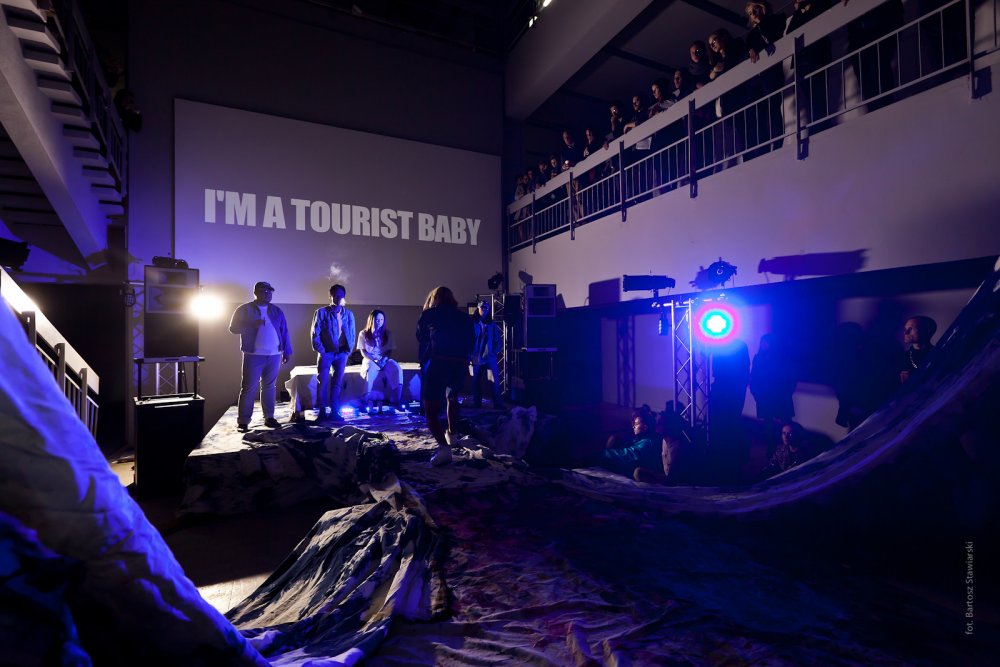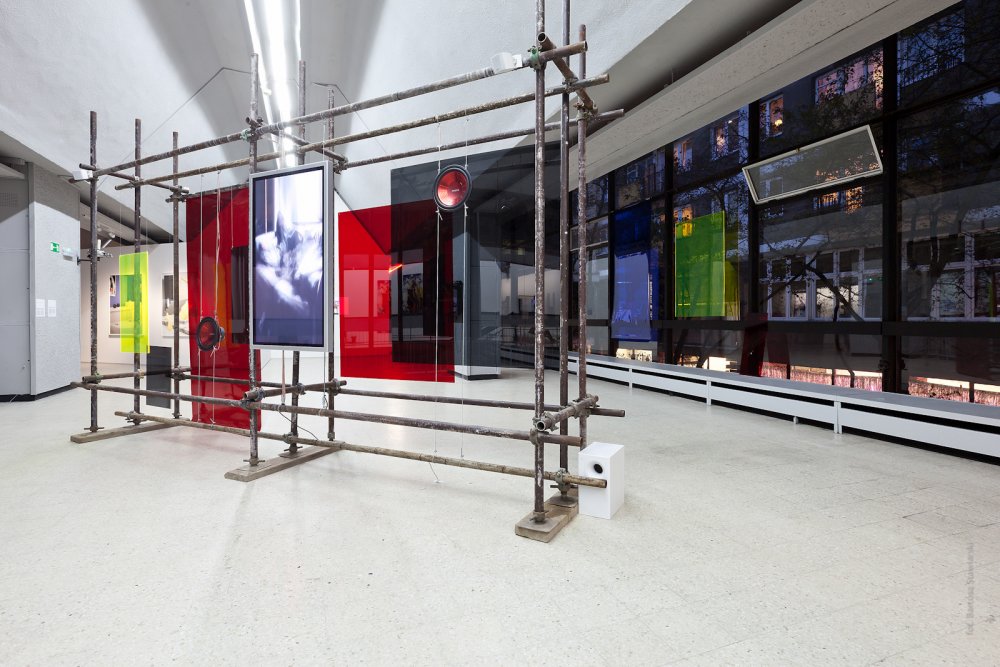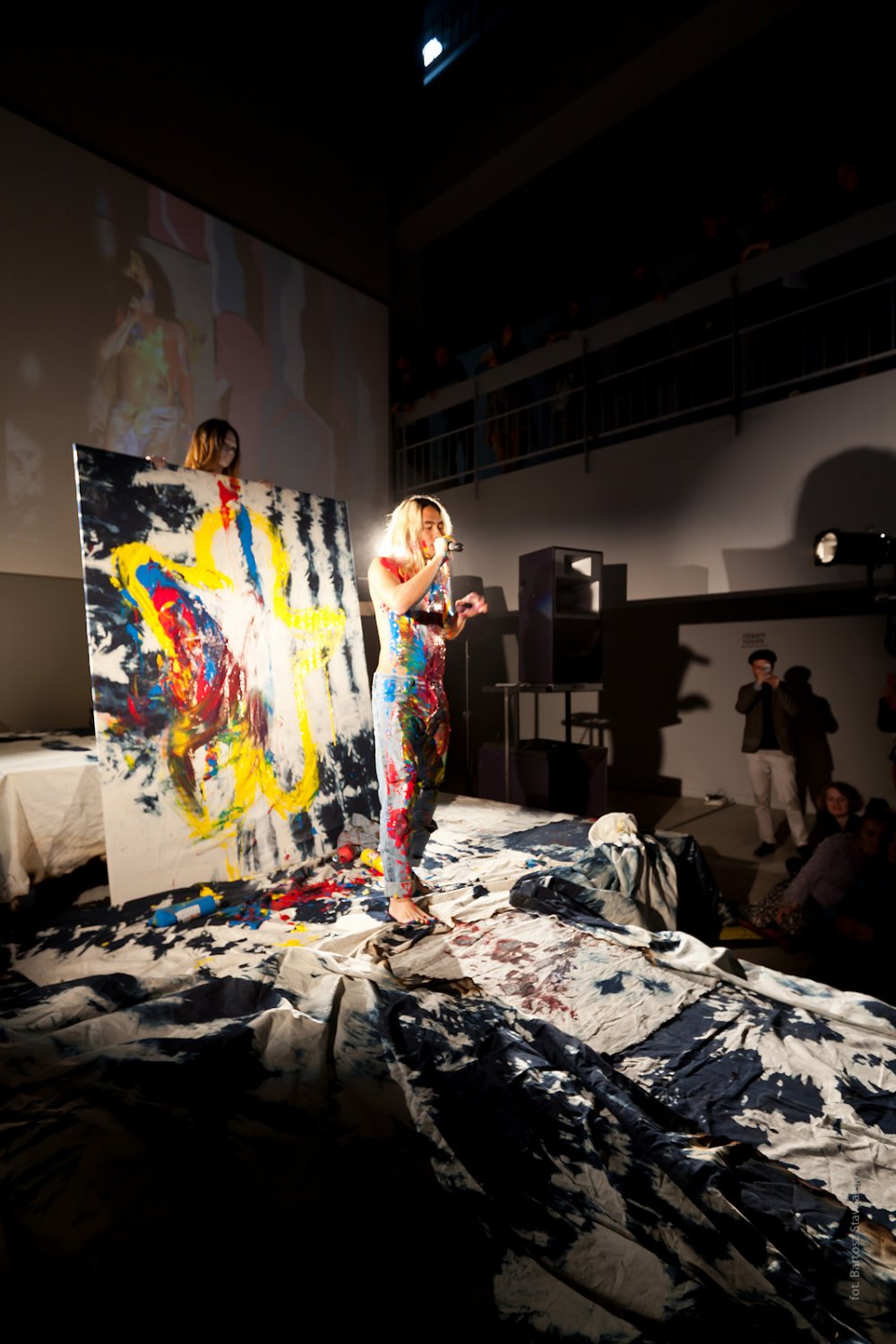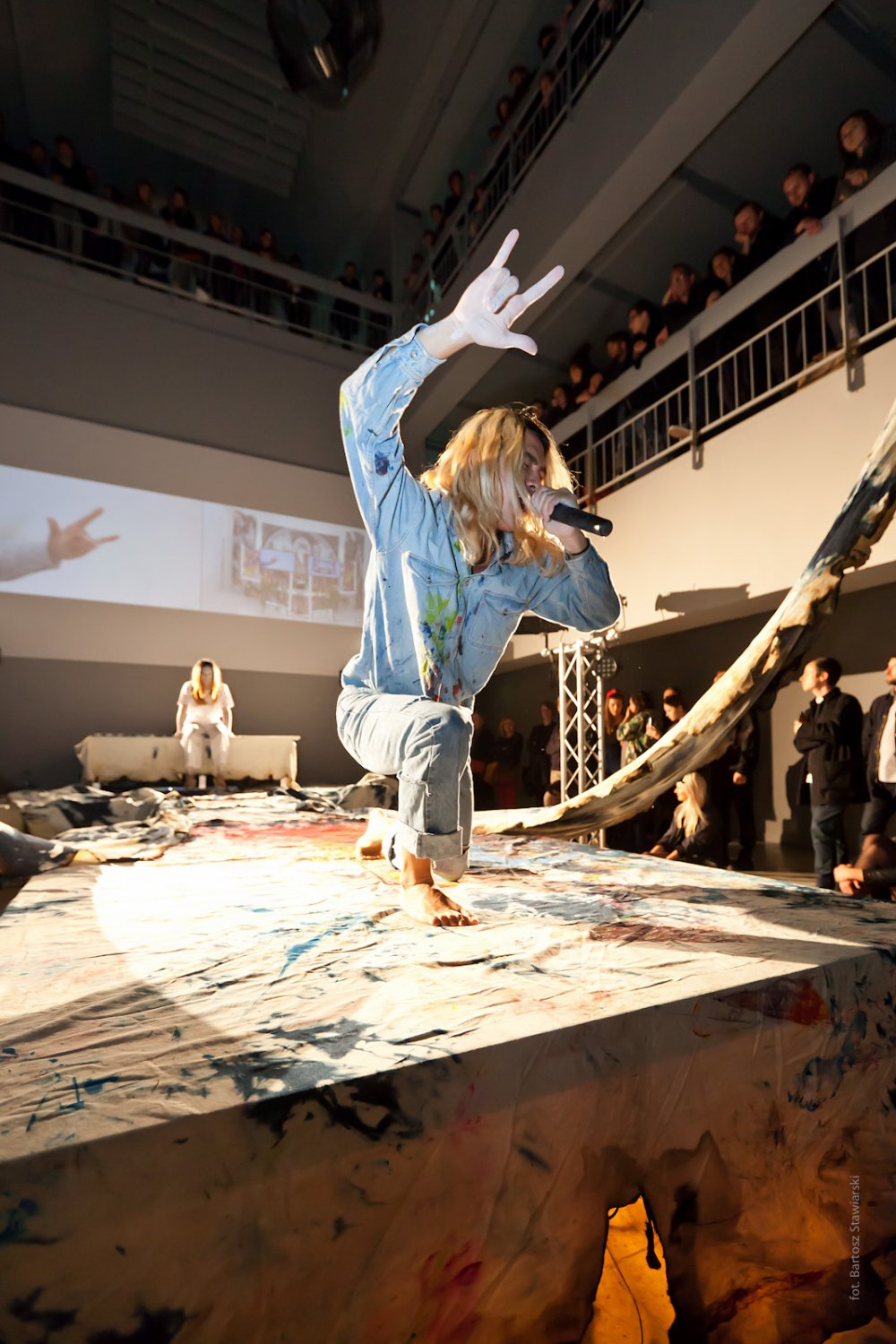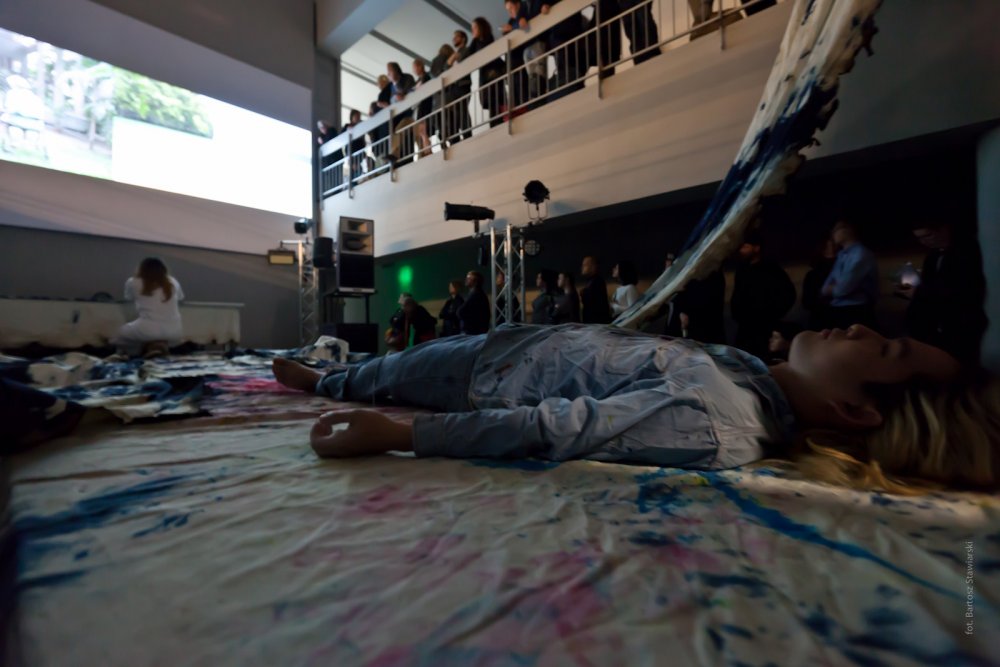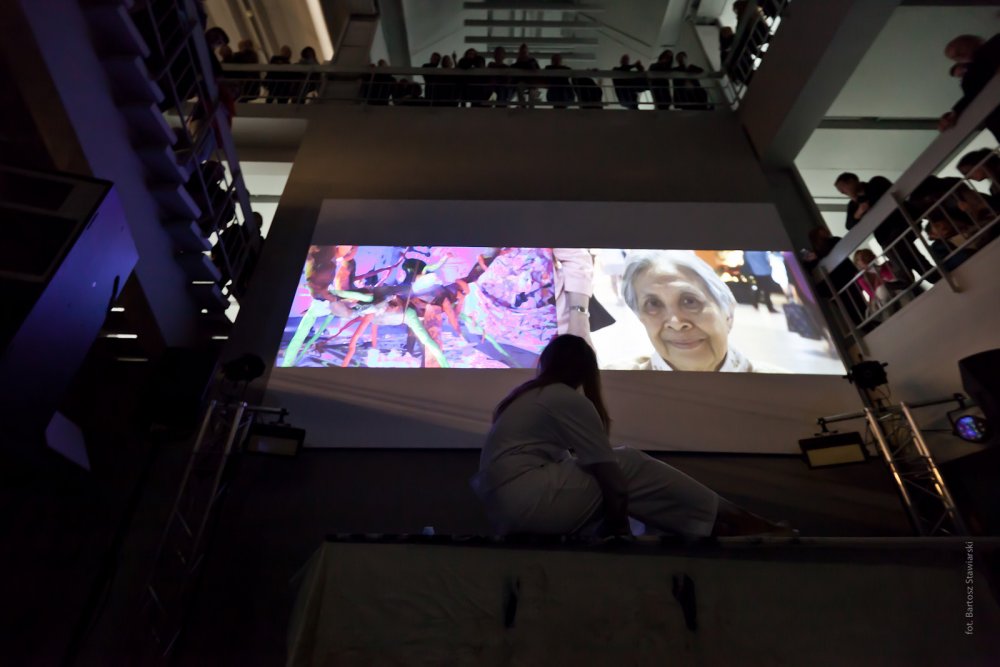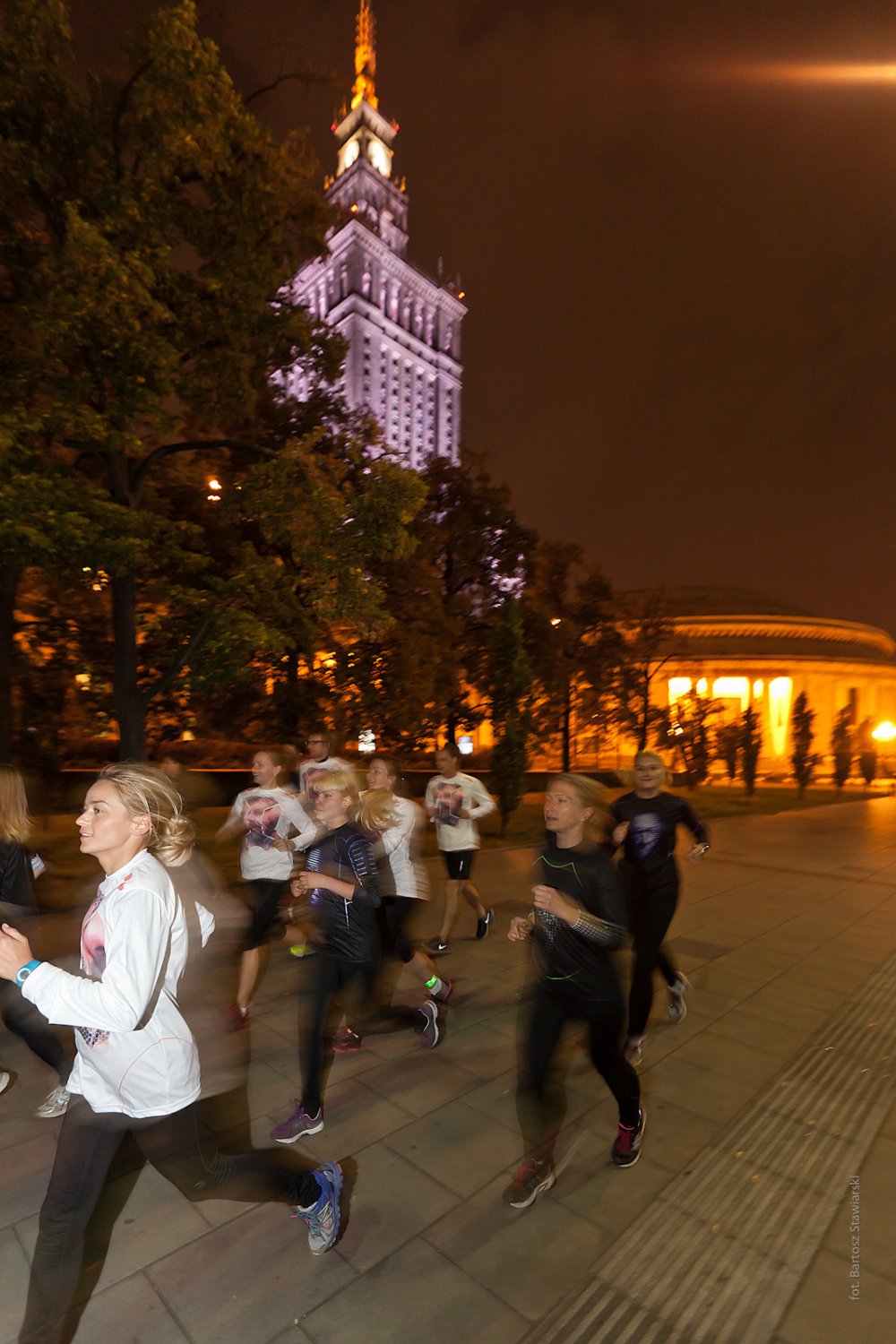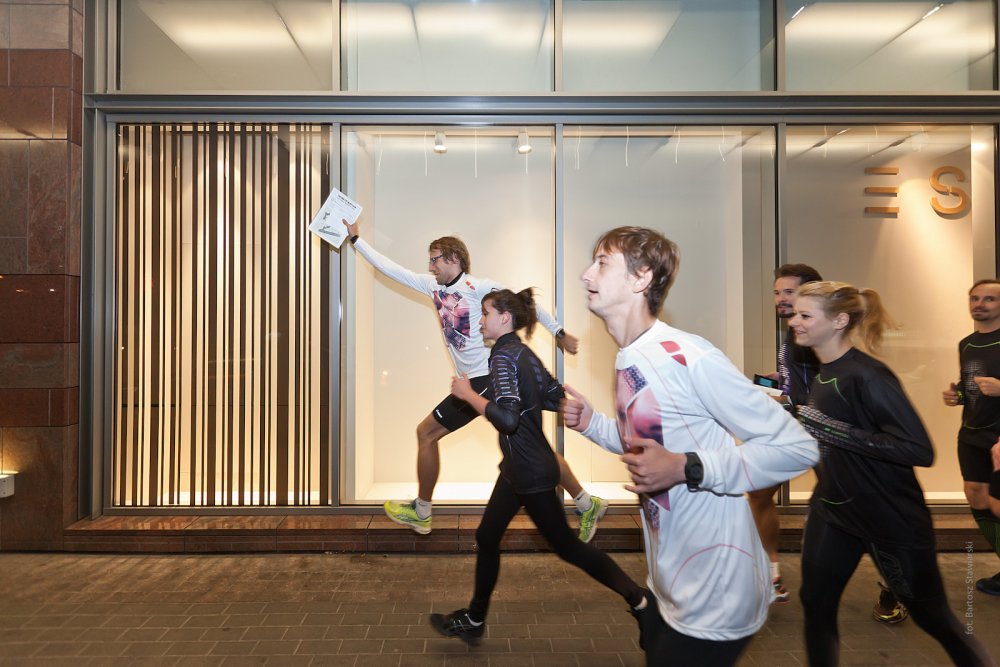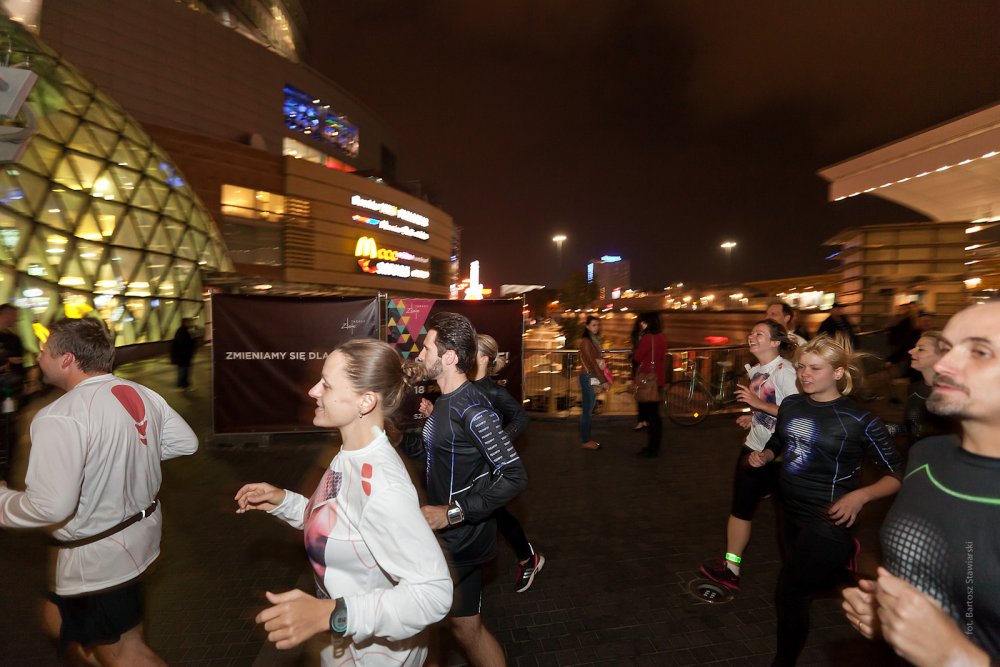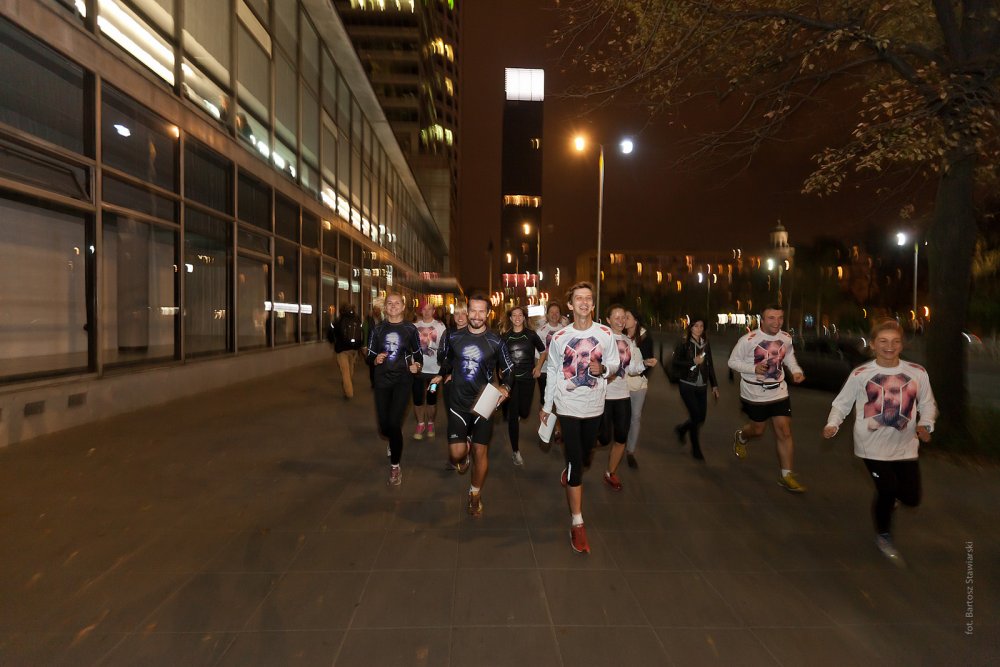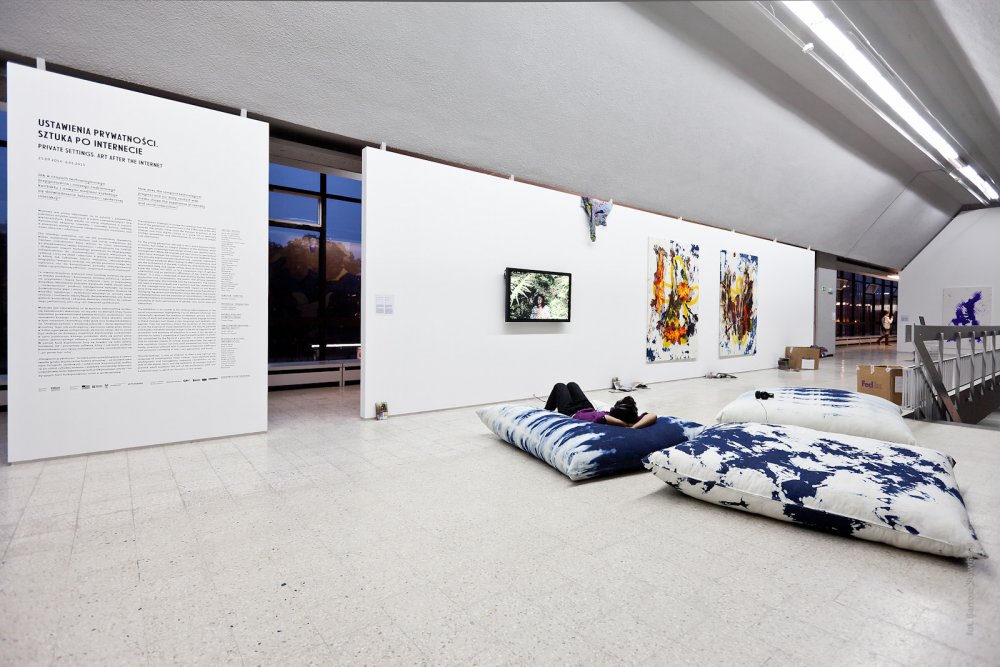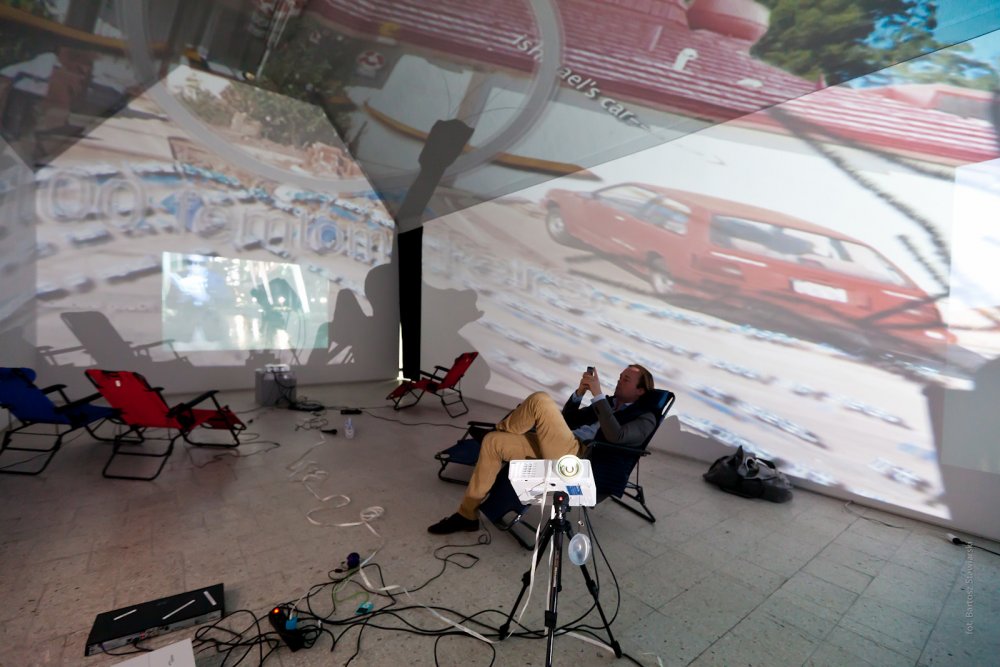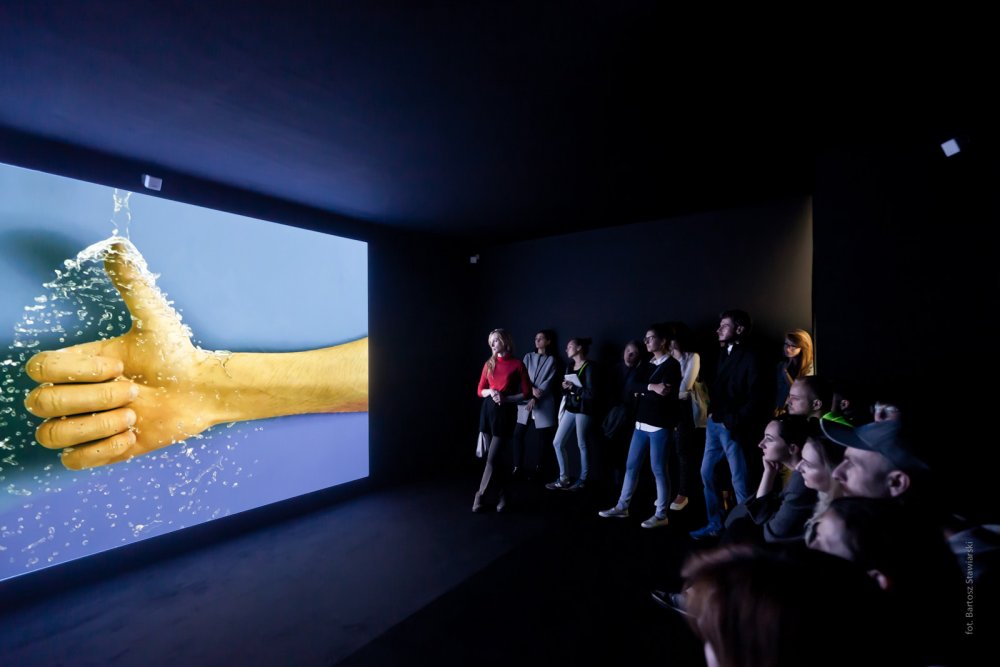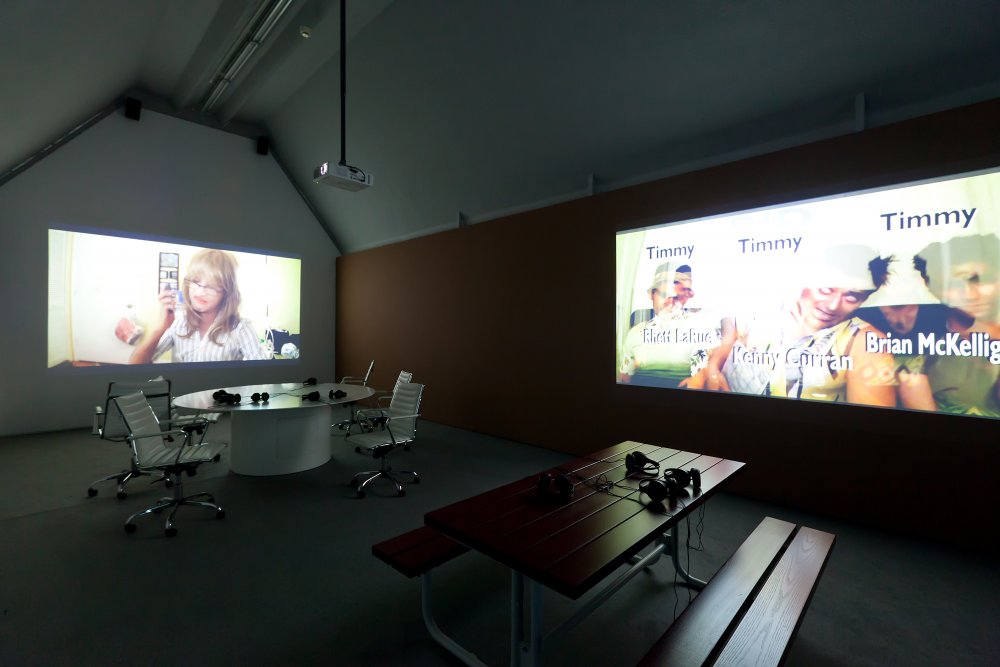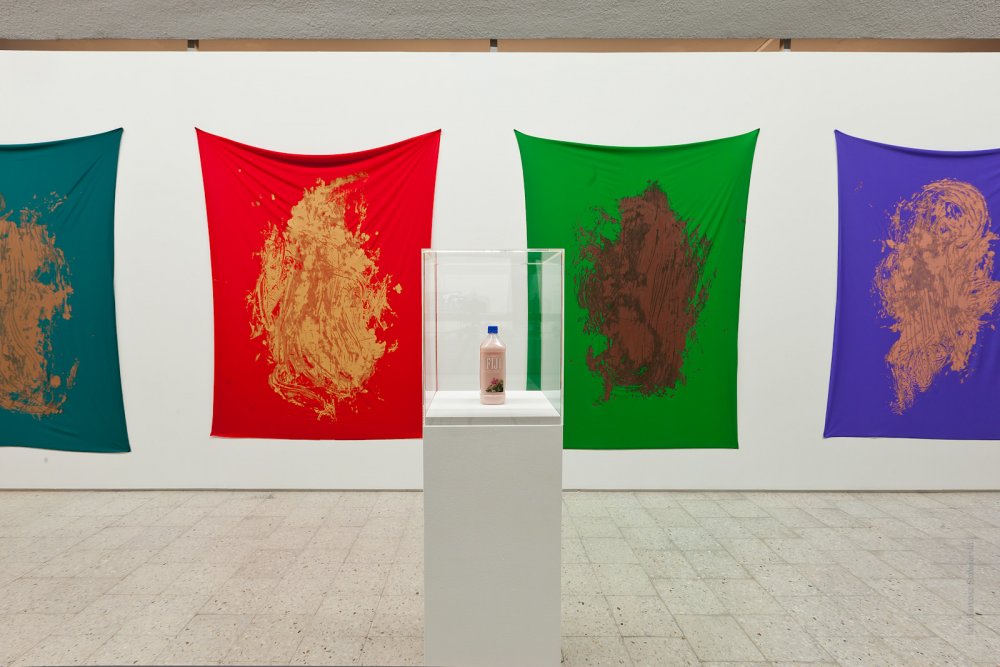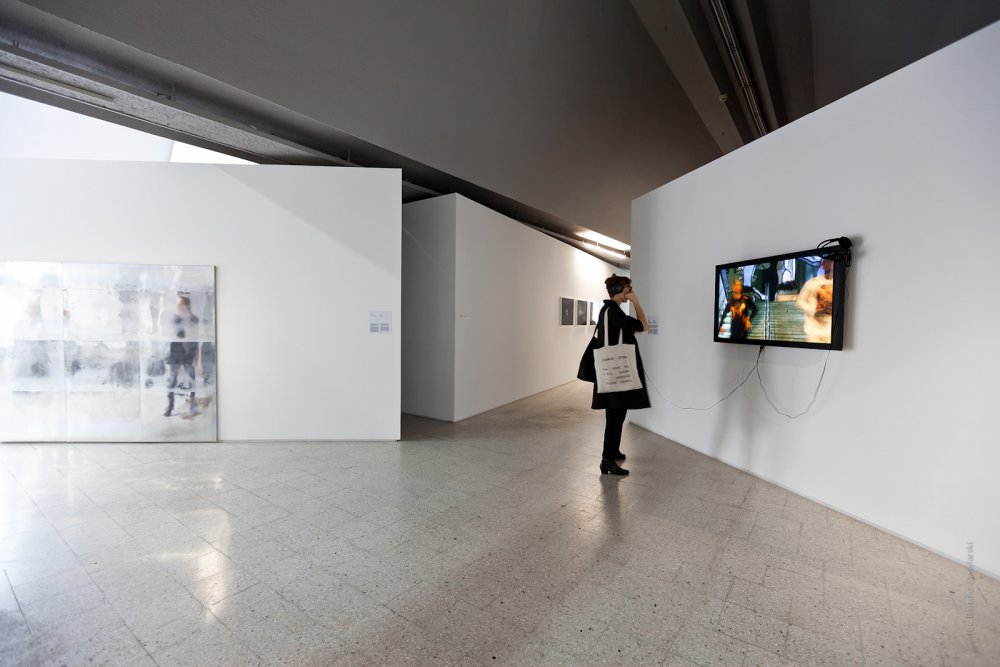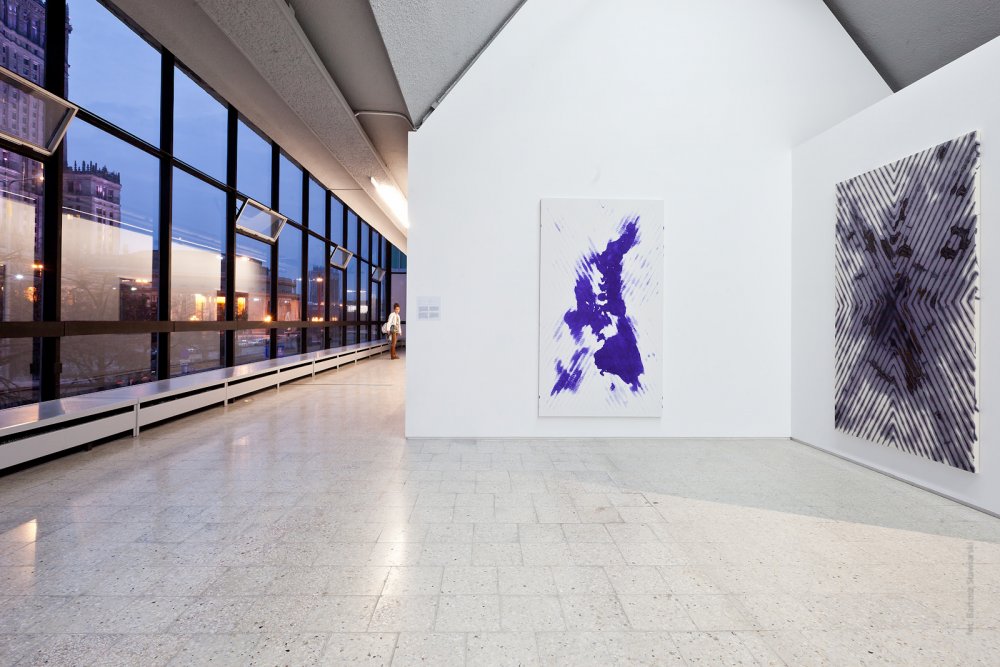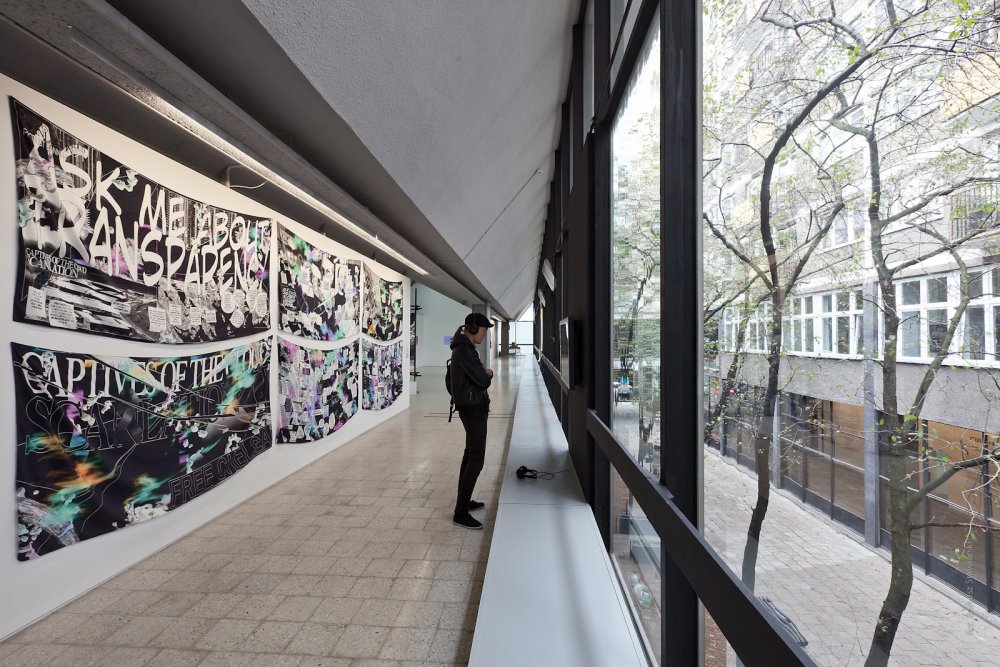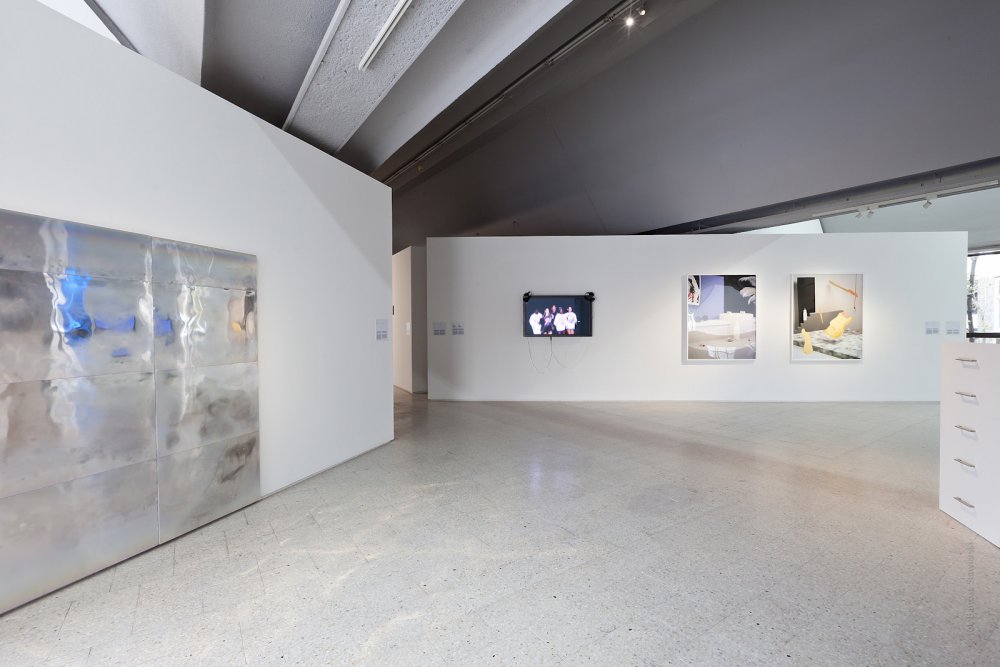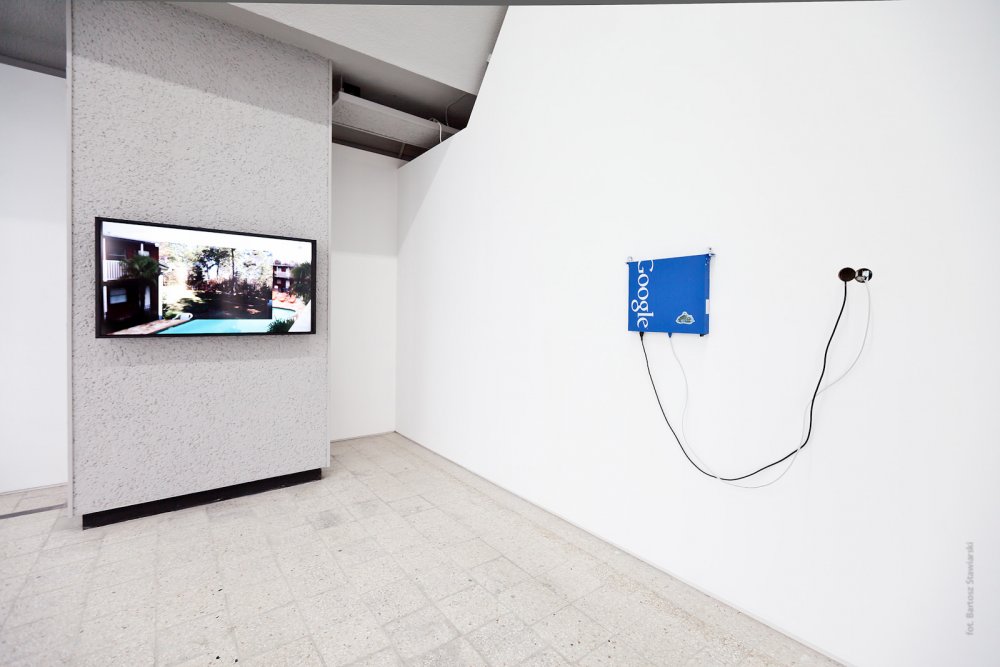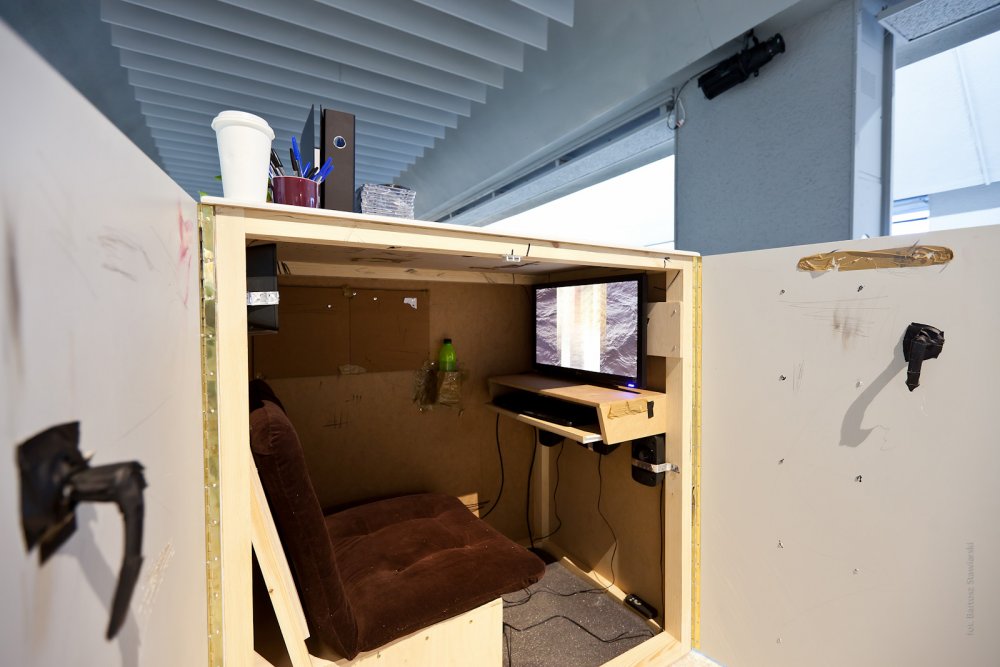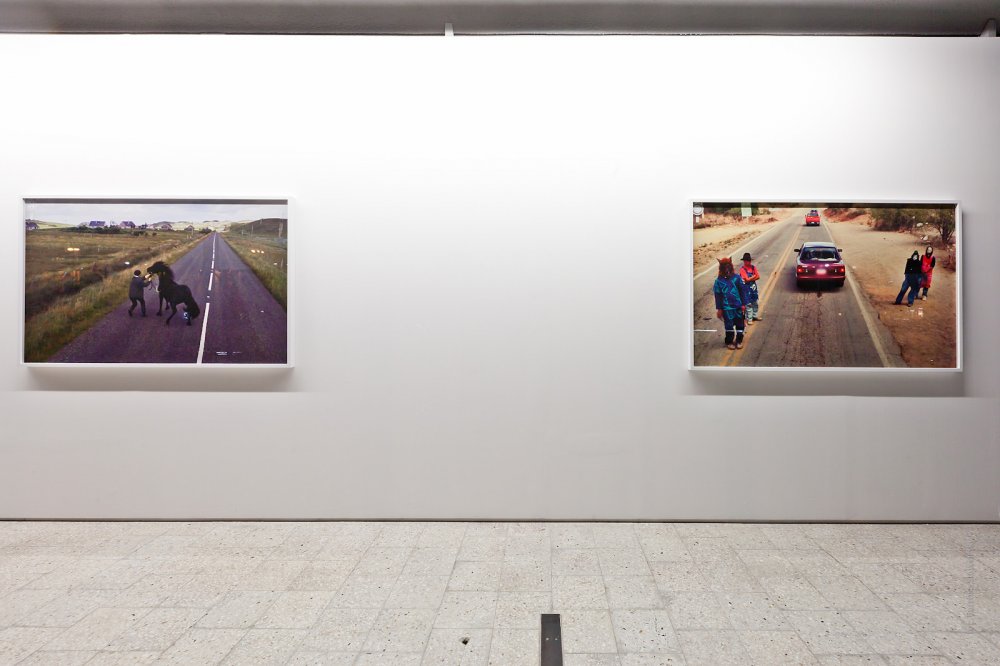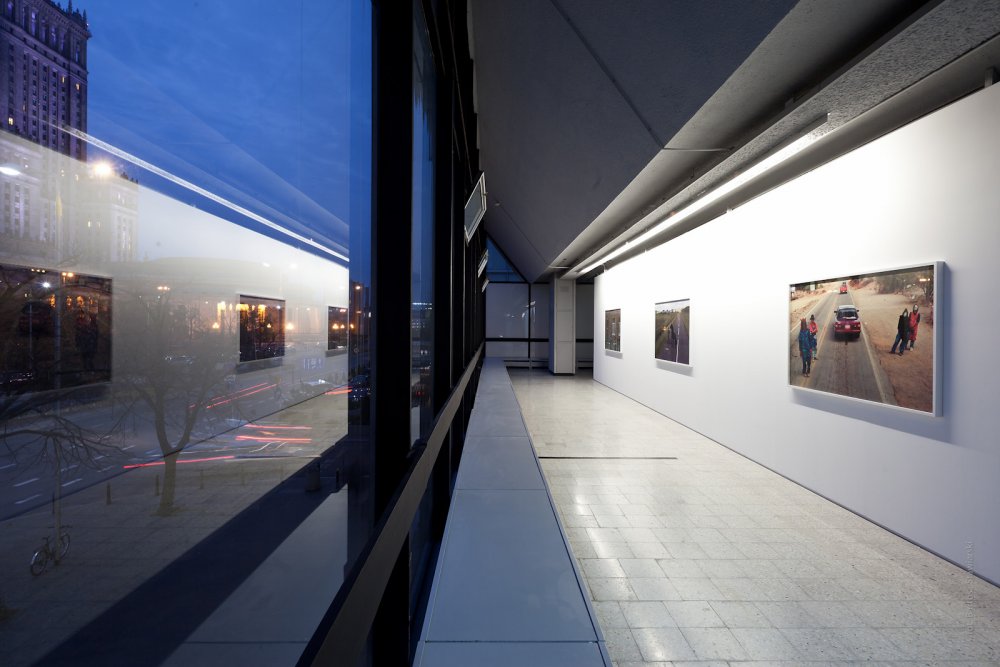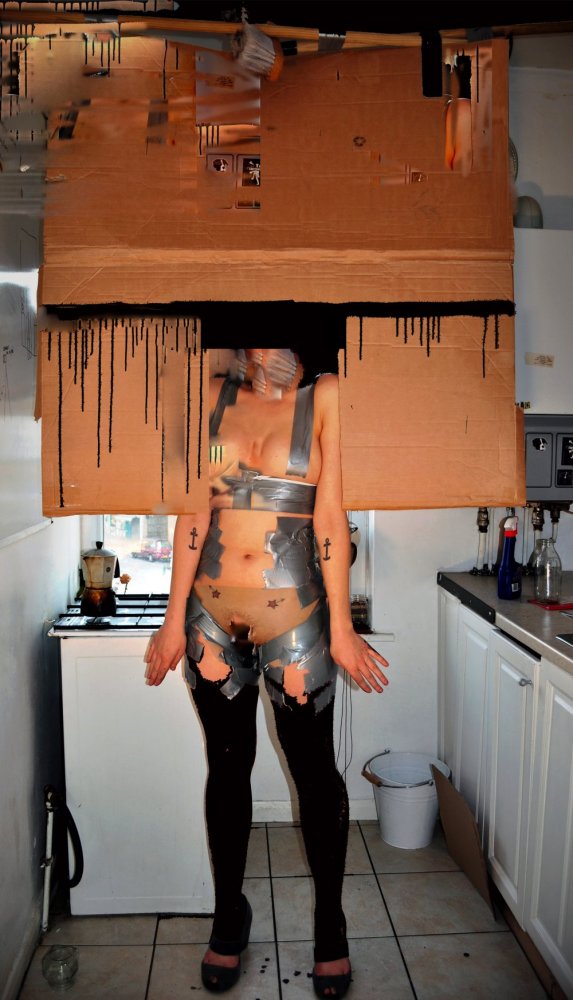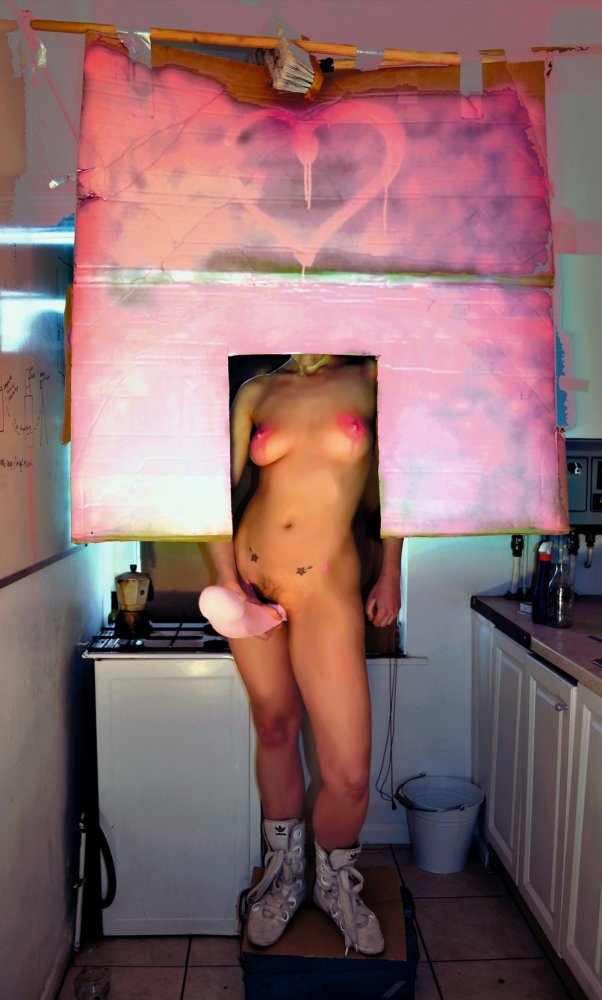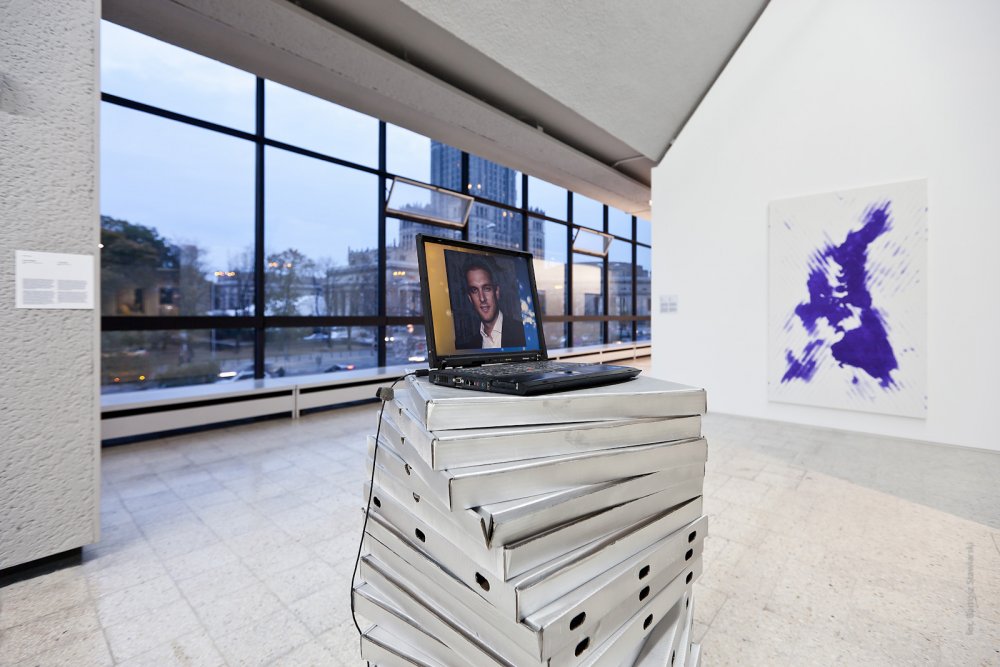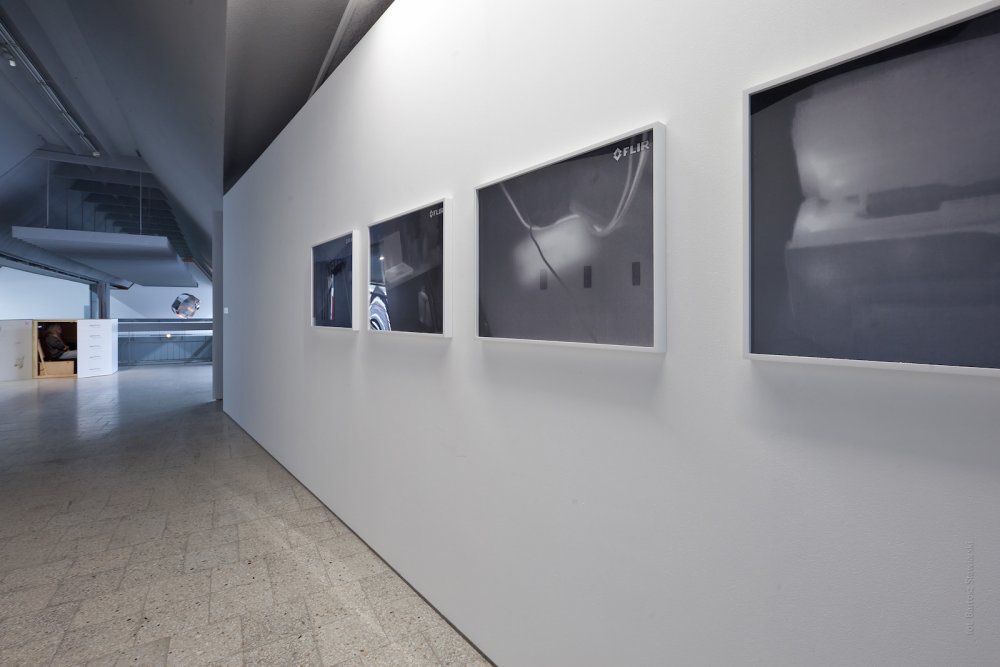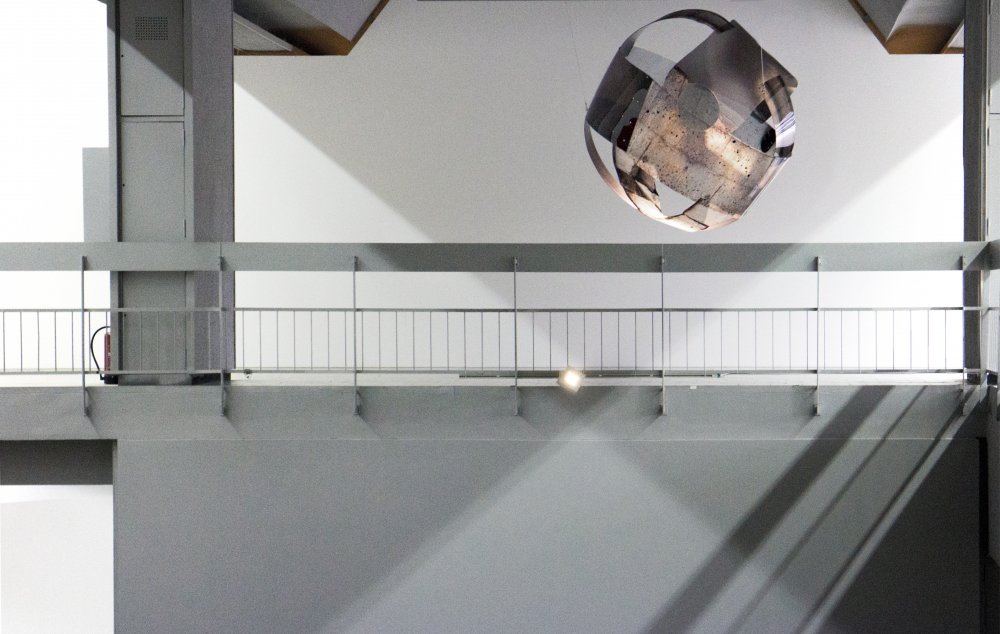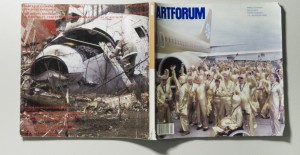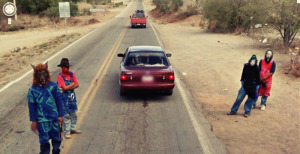For a minute I’m confused. Looking through the images for Warsaw’s Private Settings, Art after the Internet group survey, curated by Natalia Sielewicz, it’s a disorienting trip through a recent and familiar past for any fan of this kind of contemporary art. It features everything from the droll and deeply troubling leftist philosopher-as-popular-icon-and-fashionable-brand video commission and “sportswear range” ‘Thinkspiration’ (2014) by DIS, to Cuss Group‘s more aspirational attempt at redefining post-Apartheid South Africa into a “rainbow nation” in their ‘Live Distillation’ (2013) video and digital print installation. To try to attempt to explain what this kind of art is, where any attempt at a broadstroke compartmentalisation of a creative cluster of artists dispersed along an incongrously digitised world would forever fall short, is impossible. So let it be a generation born at the genesis of the internet and raised in the squall of its exponentially expanding reach; their immediate environment, politics, identity playing a central role in shaping a collective output fed by and filtered through the network.

Pooling together the work of 27 international artists and collectives born in the 80s and 90s, the exhibition – running in Poland’s Museum of Modern Art in Warsaw (MOMAW) and naturally spilling out onto the web as well as a live events programme – supports a deftly constructed insight into some of the most dynamic and influential practitioners working today. Whether its Korakrit Arunanondchai‘s ‘2556’ (2013) – “painting with history in a room filled with men with funny names” – video or Loretta Fahrenholz‘s dystopian Ditch Plains (2013) film – made in collaboration with members of Ringmasters dance crew and Hurricane Sandy – theirs is an experience that is shared in all its difference.
With a capacity for self-mediating at unprecented velocity, images, ideas and popular cultural tropes are consumed and regurgitated in infinite mutations, while remaining static in a state of endless motion. Jesse Darling‘s materialisation of software’s influence as owner and objectifier in Photoshop 1 (Healing Brush, Clone Stamp, Paint Bucket) (2013) confuses the point where the body ends and the image begins, while Harm van den Dorpel‘s ‘Untitled assemblage (selfie)’ (2013) mimics the cyclical nature of identity creation and curation within its sphere of digital prints on perspex while still dangling within, and being dwarfed by the concrete structures surrounding it.
These works, which also include those of Ryan Trecartin, Jennifer Chan, Metahaven and more, are collated, curated and recalibrated into the Private Settings website, where images and information are dispersed across artists pages, then themes: ‘Body in the Web’, ‘Affect and Presence’, ‘Corporate Aesthetics’, ‘Surveillance and Biopolitics’ and ‘Copies in Motion’. Less an index of art and more a web of associations, the exhibition becomes an experiment in form over content; contemporary culture as shaped by “today’s imperative for creative participation in public life”.
Hence, Yuri Pattison‘s gentle wordplay in the temporary “bespoke rogue scraper site” Familiarity Breeds Contentment – where a bot curates content based on the Private Settings themes, museum, artists, curator, from a server set in the exhibition space and hosted offsite – while Czosnek Studio‘s open call for video and image self-portraits in United People of the Internet declares, “the internet is you and me.” **
Exhibition photos, top right.
